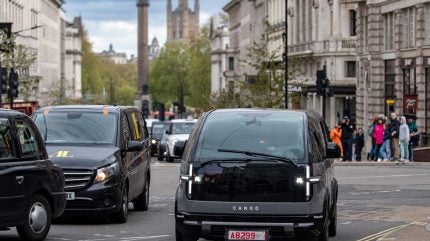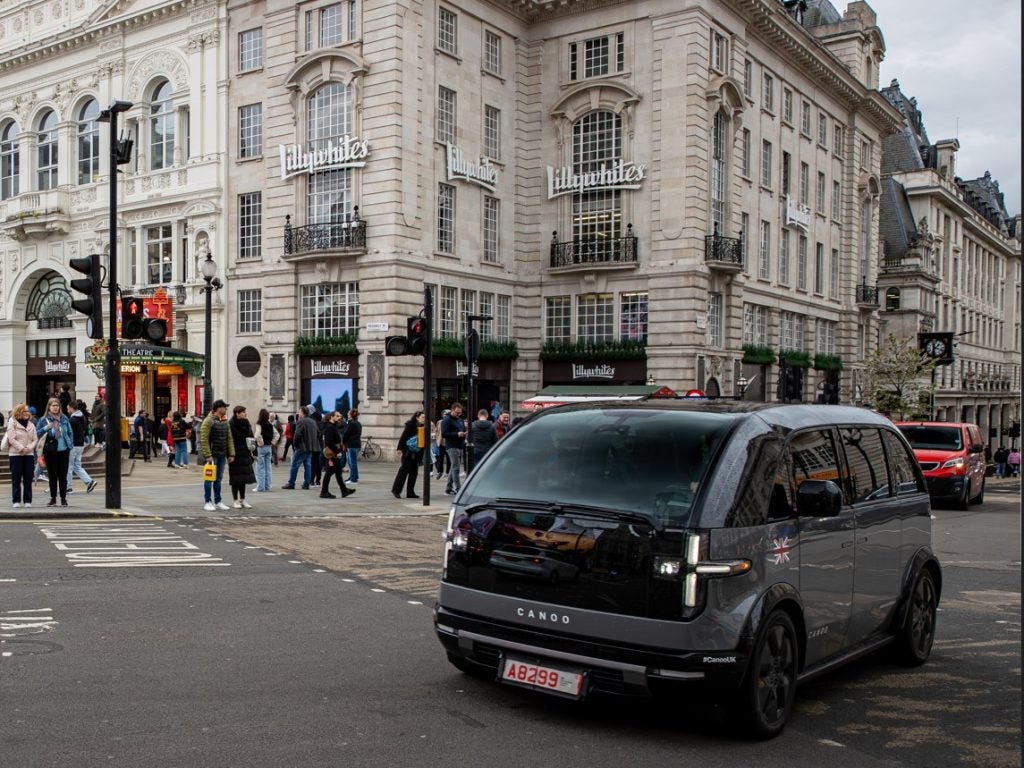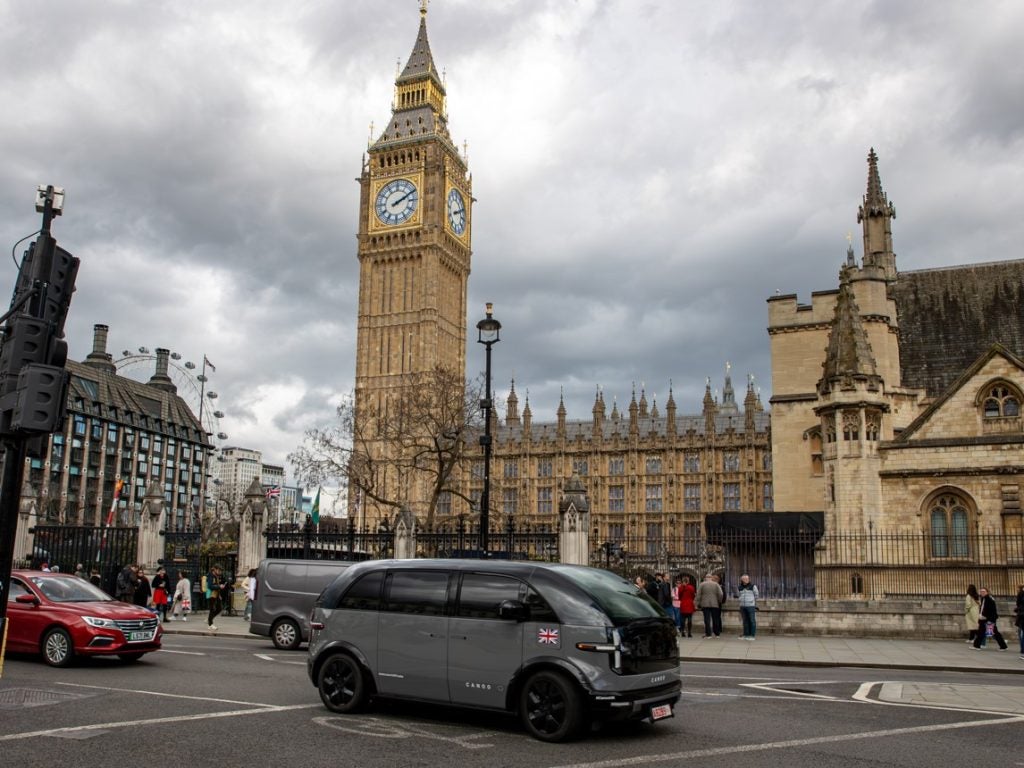
Canoo has developed a multi-purpose EV platform and digital ecosystem available for both consumers and fleets.

Discover B2B Marketing That Performs
Combine business intelligence and editorial excellence to reach engaged professionals across 36 leading media platforms.
The company has recently announced its first European operations at its new innovation centre located at Bicester Motion, in the UK. The centre is aiming to open in October and will showcase Canoo’s right-hand drive, electric vans, allowing UK customers to experience and test drive the vehicles.
The UK has one of the most ambitious regulatory frameworks in the automotive space. Uuder the Zero Emission Vehicle mandate 80% of new vehicles and 70% of new vans sold must be zero-emission by 2030, increasing to 100% by 2035. With this in mind the OEMs’ expansion into the UK is a key factor for growth and establishing connections.
We spoke to Greg Ethridge, CFO, Canoo, to learn more about the upcoming centre as well as to discuss the growth of the company.

Just Auto (JA): Could you provide some background on company growth?
Greg Ethridge (GE): Canoo was originally founded in 2017 as a new and innovative electric vehicle platform. The founders came out of a lot of different automotive businesses including Faraday, and the BMW I program.
The concept was: let’s create something from the ground up, something that’s the most flexible platform that can be used for lots of different applications. We created our multi-purpose platform. It is basically on the wheelbase of a Prius with a very tight configuration that can also be used for the payload of a large pickup truck – a one-ton type payload.
It uses a steer-by-wire mechanism where you can move the steering wheel to anywhere on the platform. It’s been used in aviation for a long time, but it has not been used in ground mobility, and that gives us a ton of flexibility in terms of moving the driver forward on the platform and in the cabin, and therefore maximizing the utilisation of space behind.
Our new CEO came in late 2021 and he said: “This is an amazing platform, but it’s only focused on consumers, but the best opportunity out there in terms of sustainability and economics is around fleets.” He really turned the business model on its head, so that’s what we’ve been pursuing since 2021.
We started delivering to NASA for their crew transportation vehicles. We also delivered to the US Army a light tactical vehicle that can be tested extensively around the EV technology and we have announced a deal with Walmart for their last mile delivery.
How did the idea to branch out of the US market come about?
At the beginning of April this year, we delivered to the US Postal Service. In the US we drive on the right side, most of the vehicles are left-hand drive. However, the postal service needs to be a right-hand drive to deliver mail. We took our steer-by-wire system and transitioned it over to deliver them right-hand drive vehicles.
It made us think look at all the other right-hand drive markets out there that we should be pursuing. Therefore, we said ‘let’s go visit the UK and see what the opportunities are there’. So, we entered and went to some of the commercial vehicle shows in April, introduced our initial vehicle, and then since then, we’ve been heavily engaged with some of the top fleets in the UK.

Our vehicle is on a very tight platform – in the US we have bigger roads. The mindset around EVs is a little different because as you add mass and weight, and therefore more battery, because of that incremental mass and weight, you can end up reducing range.
The light cargo market is very good around EV technology, whereas as you get to larger class size or heavier duty applications, it’s a little trickier; because you need more power, you need more battery. Battery is very expensive, it’s the most element item in an EV.
As you add battery to meet those heavier duty applications, you obviously lose some of the other benefits of a BEV. It starts becoming cost uncompetitive, and that’s one of the reasons there are those heavy incentives in some of those larger class markets, particularly in the US.
In the US, we’re having to sell a lot harder in many cases, because we must convince the fleet managers that there’s a place for smaller vehicles in their fleet – because historically there is a one-size-fits-all mindset. However, our vehicles are a very good fit for a lot of the applications in Europe.
How do fleets handle worries such as range anxiety?
On the whole fleets are largely route-based. You generally know roughly how many miles a day that vehicle is going to drive, how many drivers per day are going to use it, how many shifts that vehicle is going to do. So you can plan your charging infrastructure much better and get way ahead of it – at least versus many applications where you don’t know where you can charge next, you don’t know what road you’re going to be on or at what time.
This actually helps solves a lot of the infrastructure issues. That’s one of the huge benefits of being focused on fleet and commercial versus purely consumer because you’re not having the issues of people not being able to charge off-road, or wondering where they can park with charging infrastructure. Fleets are generally going to be left at the depot overnight to be charged. A lot of those unknowns become answered in our business model, whereas they may not be in other business models.
Can you discuss the upcoming opening of the UK innovation centre?
Bicester Heritage has a long history; vehicles and brands have a very long-lasting history with that area. One of the reasons we selected this area is because we were there in the in the spring, and we liked the facility. It’s got a lot of historical character around innovative mobility.
We’re being very disciplined in the way we enter the market.
We are thinking of it as place for meetings, because we’ve had such strong interest from commercial customers in the market. We felt that there needed to be a central place to be able to meet customers. We can also have our vehicles on display and have a test track to be able to take customers out on those vehicles.
We’re being very disciplined in the way we enter the market. We want to make sure we’re driving demand; we’ve got some key customers and alliances before we heavily invest. Initially, our plan is to import vehicles from our foreign trade zone (FTZ) location in Oklahoma, where we’ve received FTZ status from the US government. That gives us some incentives to be able to initially build in the US and then import, but over time, we would like to add additional manufacturing assembly capabilities in the in the UK.

What are some key goals of the innovation centre launch?
Demand has been so strong from the market – the mindset of the commercial customer in the UK and the UK Government is that they should be electrifying. We wanted to make sure we have vehicles there for testing, for driving, for introducing to the market. The storage and the test track are also critical.
The sales cycle is quite long. They firstly need to see the vehicle, then they can come back with the executive team, to drive and evaluate the vehicle. They then need to start the negotiation over a pilot program. How long is that pilot going to go on for? When is that pilot going to be? When is the vehicle available for a pilot? With the pilot they can get out, test it and drive it in their real-world use case, and get real world test miles.
Then it transitions into the sales agreement, the negotiation around the broader terms and conditions and a sales agreement itself – then delivery. When you think about that stage of multiple steps, there’s lots of activity along the way.
We want to have a robust sales pipeline, committed customers that are ready to go, ready to take deliveries, get all that infrastructure in place. As we go into 2025 and start delivering them, we need to have the infrastructure all there and ready to be implemented.
What do you expect to see happen in the EV market?
Mobility is evolving rather dramatically. I think on the commercial side, it’s probably a little less forward-thinking because there are various defined uses for the vehicle, whether it be package delivery, transport or repair and maintenance for various customers. I think at the end of the day when you look five years from now – EV is going to be there, it’s not going away.
I think that there will continue to be lots of advancement into autonomy and autonomous vehicles and how that fully interplays with fleet operators and use is still to be determined. I think the autonomy works really well in certain applications, but maybe not so much when you need physical drop off and things like that. I think that’s going to be an evolving technology.
Then obviously software is vitally important. These vehicles are really laptops on wheels. The ability for a control centre from a fleet operator to really collect data, utilise that data to enhance their processes, enhance safety, enhance worker productivity – all those things will continue to evolve. I think it’s going to make companies a lot more data savvy. They’re going to be able to take that data to improve their processes, improve their bottom lines.
I think these vehicles will be – over time – much lower cost to operate with real benefits flowing through and becoming increasingly apparent to the users.






